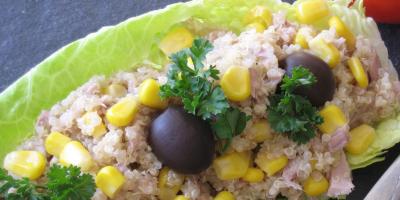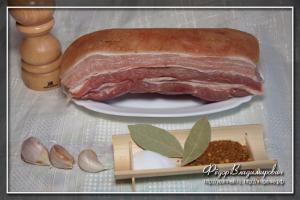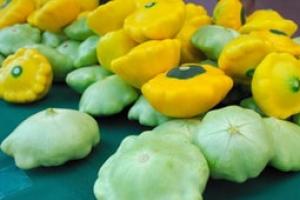Solandra is an evergreen lush vine, blooming in creamy gramophones, which is very attractive when standing on a strong support.
Compact bush Solyanuma decorative after flowering, when it is completely covered with round orange, yellow and red fruits.
Datura, also known as Datura, is a striking plant with huge fragrant flowers in pastel shades, successfully grown in spacious rooms and winter gardens.
The green parts of these plants contain the extremely toxic substance solanine, and therefore, when consumed internally, they can cause severe poisoning, the main symptoms of which are described below:
- Nausea, dizziness and headache.
- Burning of the oral mucosa, bitter taste and increased salivation.
- Difficulty breathing, palpitations.
- In case of severe intoxication, muscle paralysis and fainting occur.
In addition, it is important to know that Datura aromatica emits a cloying odor during flowering, which can cause headache, and the pretty berries of Solyanum are very poisonous, so it is not recommended to keep these plants in residential areas, especially where there are small children.
Advice. At the first signs of solanine poisoning, rinse the stomach with a weak solution of potassium permanganate, induce vomiting and give a cleansing enema of saline solution or salted water.
Amaryllidaceae
The significant Amaryllis family includes more than 2,000 species. Magnificent bulbous or corm plants are widely represented in indoor culture.
Amaryllis- the titular representative of the genus with large bell-shaped fragrant flowers, through the efforts of breeders, has been supplemented by many varieties with pink, cream and white shades.
Hippeastrum very similar to amaryllis, but different large sizes flowers, often not fragrant. Up to 6 buds bloom on its peduncle, while in amaryllis the peduncle is crowned with a cap of 8–12 flowers.
Clivia, occupying an intermediate position between bulbous and rhizomatous species, is attractive with bright orange inflorescences against the background of dark green dense leaves.
Almost all parts of plants of this family are poisonous; they contain potent alkaloids and glycosides in their tissues, which have a stimulating effect on the nervous and cardiovascular systems.
You can become poisoned by amaryllis bulbs through negligence if, during storage, you confuse them with certain types of onions, for example, shallots.
The main signs of poisoning are nausea, intestinal upset, painful stomach, cramps, palpitations, muscle tremors.
Kutrovye

The most famous representative of the Kutrov family is, of course, the regal one. Slim evergreen tree forms stunningly beautiful pink thickets along river banks in places of natural growth.
Wonderful varieties of oleander with white, cream, pale red flowers, collected in corymbose fragrant inflorescences, have been cultivated. Forms with double and semi-double flowers are very decorative.
The entire oleander plant is very poisonous; the glycosides contained in its tissues have a nerve-paralytic effect and inhibit the functioning of the heart.
Not only birds and mammals who eat its leaves or flowers die, but also insects, which are usually very resistant to various toxins.
You should be careful when replanting, and especially when pruning the plant, making sure that the juice does not get on the skin of your hands, eyes or lips.
Advice. After caring for oleander, you should thoroughly wash your hands with soap and wash your face.
Just one eaten oleander leaf can lead to severe intoxication and even death. Tree branches should not be used for smoking or barbecuing.
Symptoms of oleander poisoning:
- Dizziness, nausea and vomiting.
- An increase and then a sharp decrease in blood pressure, cyanosis of the skin and mucous membranes.
- Difficulty breathing, drop in heart rate, slowing down of the heart until it stops.
Blooming oleander should not be placed in sleeping areas, as the fumes from green leaves, shoots and flowers are poisonous, and you can be poisoned while sleeping.
Be sure to explain to all family members, and especially children, how to properly handle oleander, which will be an excellent prevention of poisoning.
Plants with low poison content
The group should be treated with some caution, but still the poison of these plants is not as dangerous to health as the toxins of the species discussed above. After contact with its representatives, irritation of the skin and mucous membranes, some swelling is possible, and if taken orally, nausea, vomiting and diarrhea.
- . An exquisite indoor plant with dark green leathery leaves and an abundance of delicate double flowers, despite its capricious nature, remains a favorite of many gardeners. All parts and especially the fruits of gardenia are poisonous; if consumed internally, they can cause malaise, accompanied by shortness of breath, diarrhea and headache.
- . Refined, recognized as indispensable in design, unpretentious appearance with narrow, rich green leaves and a thick, stocky stem. Dracaena juice is poisonous; it is released at the break of the stem and when it gets on the skin, it causes redness, painful irritation, and sometimes blisters appear.
- . A lush bush in bloom is the pride of any housewife. An abundance of flowers, textured dense leaves and easy care make cyclamen a favorite among green pets. Juice contains toxic substances, which can cause serious burns to the skin and mucous membranes, and once inside the body cause convulsions.
- . Revered by amateurs for its unpretentiousness, ease of propagation, baskets of flowers of all kinds bright colors, pelargonium perfectly purifies the air, can relieve fatigue and even cure migraines. This species is dangerous for people prone to allergies, as well as for asthmatics. For them, proximity to a flower is contraindicated, as it can cause attacks of suffocation and allergic reactions.
- Dwarf pomegranate. The tree is grown in rooms as attractive ornamental plant with beautiful delicate flowers and warm orange lanterns of fruit that are not only edible, but even healthy. All green parts may cause vomiting, diarrhea and cramps if ingested.
- . This spectacular desert inhabitant of the agave genus looks great in winter gardens and spacious rooms. The strongest phytoncides secreted by yucca and essential oils have bactericidal and antifungal properties, but may be poorly received by people with an increased tendency to allergies. Eating parts of yucca internally can cause indigestion, muscle tremors and dizziness.
- Rhododendron– luxurious beautiful flowering shrub, delighting owners in the winter months, contains potent glycosides. The juice of its green parts irritates the skin, and when consumed internally, it first causes depression and then stimulation of the heart rate, abdominal pain, digestive disorders, and swelling.
How to handle poisonous plants?
First of all, you should not throw poisonous specimens out of your home only after learning about their potential danger. If there are children in the house, you can try to find a more appropriate place, and elders should be explained the rules for handling plants. This will be useful for the child in the future - after all, no less threats lie in wait for him on the street.
To keep plants safely, you should adhere to the following basic rules:
- Be sure to find out the exact name of the flower brought into the house. The largest number of poisonings occurs precisely due to ignorance of the characteristics of a particular species.
- If there are small children in the family, it is better to temporarily abandon the obviously dangerous specimens.
- Place any, especially poisonous, plants only in places inaccessible to children and pets. The situation when your favorite parrot feasts on an ivy leaf can end dramatically.
- The use of rubberized protective gloves when working with green pets should become a sustainable habit for an experienced gardener.
- Care must be taken to cut off the juicy parts, keeping in mind the poisonous juice that can splash onto the mucous membranes of the eyes or mouth.
- Do not scratch your eyes, touch your face or straighten your hair while caring for, replanting or pruning houseplants.
- It should be remembered that even dried poisonous plant tissues retain their toxic properties.
Like any living organisms, houseplants are complex system, have their own characteristics, advantages and disadvantages. Having a good understanding of their nature, having studied the characteristics of the species and conditions of detention, you can safely settle them in the house beautiful flower and enjoy watching a beautiful representative of the flora.
Indoor plants not only humidify and purify the air, they can become a true decoration of the interior, emphasizing the style features when decorating a living space (for example, without small flowers in terracotta pots it is difficult to imagine decorating a house in the Provence style).
Unfortunately, when purchasing this or that houseplant, most often they are guided not by real botanical information about it, but by the desire to get a bright or easy-to-care-for specimen, or even to solve pressing everyday problems with the help of a flower: to attract a husband, prosperity and peace to the house, to get fabulously rich in short time. At the same time, they forget about the requirements of the flower itself, completely ignoring the fact that most indoor flowers are poisonous; they can cause enormous harm to children, animals and flower growers themselves if handled incorrectly. In this article we decided to figure out what they look like without harmful plants may turn out to be real poisoners.
Most indoor plants can be classified as poisonous.
Sadly, most indoor plants can be confidently classified as poisonous, and not only individual indoor flowers are poisonous, but entire families: Aroidaceae, Curtaceae, Solanaceae, Euphorbiaceae.
Growing indoor flowers with poisonous characteristics should not endanger children, pets and birds, who may accidentally become poisoned. It is enough to follow simple rules to make flowers delight you and improve your mood; getting rid of them is unnecessary, because toxic substances are not released into the air. The exception is the blooming oleander. During flowering, it is better to take the bush out into the fresh air.
To know which indoor flowers you should be wary of, read this article to the end.
1. Spathiphyllum, or poisonous “female happiness”

Women's happiness - the plant has poisonous juice.
The indoor plant spathiphyllum (in other words, flagolist) is extremely popular; it is believed that this elegant flower can bring happiness to the home, especially for the female half. It is quite difficult to verify this - happiness depends on the flower or on the behavior of the woman herself, but there is no point in arguing that Spathiphyllum (Araceae family) is poisonous.
An elegant plant with white or red bracts is often used to decorate the interior. It is important to properly care for the flower. Spathiphyllum grows well in a room, can tolerate some shading, and does not emit dangerous chemical compounds into the air, but you should be careful when replanting - the plant sap is extremely poisonous. Considering that the flagolist bush needs annual spring transplant, you should remember the following precautions:
- Spathiphyllum can only be divided and replanted while wearing rubber gloves.
- If plant sap accidentally gets on open areas skin, immediately wash the area with plenty of soap and water.
- If spathiphyllum juice gets into your eyes, a chemical burn is possible, so you should immediately seek medical help.
- Try to protect the plant from the encroachment of pets who like to taste the leaves and flowers, otherwise the pet may suffer greatly from poisoning from the poisonous juice of the flagolite.
- Dieffenbachia - if it comes into contact with the skin, Dieffenbachia juice causes severe irritation and burns; if it comes into contact with the mucous membranes, swelling may occur, even to the point of stopping breathing. Not even a large number of Dieffenbachia juice can kill small pets.
- Anthurium – when contacting anthurium juice, serious consequences can occur for a person: severe poisoning, allergic manifestations, inflammation of the mucous membranes.
- Aglaonema - it is worth taking precautions when caring for the plant, replanting and dividing - the poisonous sap causes extremely negative consequences.
Danger level: medium. The sap of the plant is poisonous, causing irritation and burns.
2. Zamioculcas

Dollar Tree.
Another representative of the Araceae family, which can increasingly be found among amateur gardeners, is Zamioculcas. This elegant plant with spreading branches dotted with shiny glossy leaves is believed to be able to attract a flow of dollars into its owner's wallet. Money is money, but it’s worth thinking about the safe cultivation of the “dollar tree” - the poisonous sap, if it gets on the skin, causes persistent irritation. You should not replant or divide zamioculcas without gloves, and you should wash your hands thoroughly after contact with the plant.
Danger level: medium. The sap of the plant is poisonous and causes irritation.
3. Cyclamen

Cyclamen, or dryweed.
It’s hard to argue with the beauty of cyclamens - moth-shaped flowers appear above the squat rosette of leaves in the fall and bloom almost all winter. There is no limit to the variety of colors and shapes - the petals of modern varieties of cyclamens have fringes and cut edges, and their color is amazing. There are not only single-color varieties, but also flowers with borders, stripes, and specks of contrasting tones.
The plant grows from an underground tuber, the juice of which is very poisonous; if it comes into contact with the skin, the liquid causes redness, burning and severe itching.
Danger level: medium. The tuber of the plant is poisonous; its juice causes redness, burning and itching.
4. Scary Monstera Monster

A charming indoor plant is Monstera.
Monstera is a huge powerful vine with leathery leaves with holes. This plant is very popular among lovers who have winter gardens. The majestic flower grows quickly, practically does not get sick, and does not require special care.
Monstera belongs to the Araceae family, its juice is poisonous and causes irritation. skin and mucous membranes.
Monstera has one peculiarity - in cloudy weather, its leaves begin to secrete juice, which accumulates in drops at the tips of the leaves. Curious children and cats try to play with the drops and lick them off, which leads to an inevitable burn of the gastrointestinal mucosa.
Danger level: above average. Drops of sap on the leaves of the plant are poisonous. Causes a burn.
5. Indoor pomegranate

A rich harvest has ripened on miniature pomegranate trees.
It seems that the pomegranate tree does not pose any danger, because pomegranate fruits are very healthy; even sick and severely weakened people have been eating them since ancient times.
Do you know that only the fruits of this plant are useful, all other parts (branches, leaves, roots) are poisonous, so you need to be careful when growing indoor pomegranate.
Danger level: medium. All parts of the plant are poisonous, except the fruits.
6. Oleander and its flowers

Oleander blossom.
When oleander bushes are blooming, it is difficult to take your eyes off the plant - charming clusters of flowers appear at the ends of all young branches. The delicate aroma can cause headaches, so flowering plant cannot be placed in the bedroom (it is better to take it out into the fresh air if possible).
Caring for oleander can only be done with protective gloves, because all parts of the plant (including seeds) contain poisonous juice, which can cause vomiting and bloody diarrhea, a sharp decrease in blood pressure, and severe poisoning can result in death.
Danger level: highest, deadly.
7. Adenium, or desert rose

Charming adenium.
IN Lately passion for exotics has led to the fact that adenium has become a fairly common flower among inexperienced plant growers. These flowers are full of unimaginable beauty, grace, uniqueness and charm, but at the same time they are so poisonous that extreme caution is required when caring for insidious exotics. Adenium juice causes damage to the skin and mucous membranes, causing persistent poisoning when ingested by humans and animals.
Danger level: above average. The juice causes persistent and severe poisoning.
Rules for handling poisonous flowers
The list of poisonous indoor plants is very wide, but this does not mean that all plants should be immediately swept from the windowsills into the trash heap. A number of precautions should be observed to protect family members and animals from poisoning:
- Replant plants while wearing gloves.
- Wash your hands thoroughly with soap after caring for plants.
- Supervise children and animals to ensure they do not come into contact with poisonous houseplants.
- Do not try unfamiliar berries and fruits.
- Do not rub plant leaves with your bare hands.
- Do not use unfamiliar plants for treatment, following the advice of ignorant people.
If these rules are followed, most poisonous plants become completely harmless.
Plants at home are cozy and beautiful, your own garden in the middle of winter is just super! Empty after you flower shop, bought a fancy pot, seeds or seedlings, and Google admitted what drainage is. Great. Now is the time to stop! Place the pot in place and carefully read the name of the plant, and then quickly check the list in this article to see if it is among those listed. Because we will talk here about poisonous plants, close contact with which can cost your life.
Vomiting, abdominal pain, arrhythmia, burning in the mouth and lips, cramps - this is not the whole list of “pleasures” that can be obtained if you do not find out in advance which plant has put out its leaves in the living room and do not start treating it accordingly. It is better to show respect and caution - do not grab the bulbs and leaves with your hands until you are sure of their safety.
Signs that a plant is going to kill you:
If you break the stem or break off the leaf, a juice similar to milk is released.
Its leaves are smooth, as if varnished.
It has yellow or white berries.
Its leaves are shaped like a holey umbrella.
So, our insidious but beautiful favorites:
Oleander (lat. Nérium)
The juice of this plant can cause blindness, arrhythmia and tremors, and the aroma of the flowers can cause dizziness. Truly stunning beauty!
Lily (lat. Lilium)

She is definitely popular and seems so innocent. But some varieties cause stomach upset, vomiting, headaches, blurred vision and allergies. And at night, when we sleep, the lily insidiously absorbs oxygen and releases carbon dioxide.
Orchid (lat. Orchidaceae)

Another dangerous beauty. Its smell causes insomnia, so it is not recommended to place an orchid in the bedroom, even if pink flowers perfectly harmonizes with the bedspread.
Tuberose or polyanthes (lat. Polyanthus)

White, cloud-like flowers can be misleading. No need to give in! The smell of tuberose causes dizziness and depression, headaches and nausea.

A small green tree with carved beautiful leaves, which you should not rejoice in having, it is better to wash your hands thoroughly with soap. After all, fatsia juice is toxic and, if it enters the body, causes serious disturbances in the functioning of the nervous system.
Toxidendron, mustard gas or oriental sumac (lat. Toxicodendron)

A stylish plant with sharp red-green leaves, it looks deceptively harmless. Attention! Touching the plant causes severe allergic irritation, unpleasant itching, redness of the skin and blisters immediately and for a very long time.
Philodendron (lat. Philodendron)

Croton (lat. Croton)

White, body milk-like croton juice causes severe burns when it comes into contact with the skin, and instant and painful death if it gets into the bloodstream.
Azalea (Rhododendron Sims) (lat. Azalea)

Once in the body through the mouth, it causes intestinal colic and cramps, so there is no need to eat the leaves, they are of no use anyway - despite their appetizing appearance, they taste so-so.
Dieffenbachia (lat. Dieffenbachia)

Tree with large yellow-green leaves. The juice is poisonous and can cause serious poisoning. You need to be careful when cutting shoots or leaves - you can get burned.
Amaryllis (lat. Amaryllis) And hippeastrum (lat. Hippeastrum)

The poisonous bulbs and juice of these plants are rich in the alkaloid lycorine, which stimulates the vomiting center in the brain. Amaryllis and hippeastrum bulbs are similar to those of the good old onions. The main thing is not to confuse. Once in the body, they cause vomiting, depression, diarrhea, abdominal pain, cramps, drooling, loss of appetite, tremors, paralysis and even inflammation of the stomach and intestines.
Beautiful Browallia (lat. Browallia speciosa)

It is named so for a reason: it is truly beautiful, and everyone wants to plant it at home. Forward! The main thing is to remember that its juice, if it comes into contact with the skin, causes severe intoxication. The smartest thing to do is to first get yourself a pair of rubber gloves.
Clivia (lat. Clivia)

Its lush inflorescences are charming, but if the leaves or rhizome are handled carelessly, clivia juice causes vomiting, diarrhea, excessive salivation, and sometimes paralysis. It should be remembered: beauty is deceptive and insidious.
Pepper nightshade (lat. Solanum capsicastrum)

At home, they usually plant its dwarf variety with bright, round berries that you just want to eat. It's not worth it, really. Nightshade berries are extremely poisonous.
Caladium (lat. Caladium)

All parts of the plant are poisonous and cause suffocation and death.
Mother-in-law's tongue or Sansevieria (lat. Sansevieria)

Not as poisonous as some would like to think. Causes short-term pain in the mouth and allergies.
FIcus (lat. Ficus)

So familiar, close and dear, it would seem that you shouldn’t expect any surprises from him. Whatever the case. If the juice gets on the skin it causes severe irritation and dermatitis. And yes, you don’t need to eat it either.
Mimosa pudica or Gesner tulip (lat. Mimosa pudica)

The most dangerous plant from the list - your hair falls out from being around him for a long time!
Hurray, it seems the list is over, and you can, putting on gloves and a gas mask, calmly stick the seeds into the ground, water them and forget? But no! Almost all indoor plants are poisonous to one degree or another. So it's better to think again.
Is it worth keeping anthurium in your apartment? The question is controversial. After all, this plant can cleanse polluted air indoors without emitting harmful compounds. But at the same time, you need to be careful when handling this flower, and place it where pets and small children cannot reach. Contact with the juice of this plant can cause severe poisoning, allergies, and inflammation of the mucous membranes.

Pachypodium - Madagascar palm
Pachypodium is another plant of the Kutrov family. In general, almost all flowers of this family are poisonous.
Pachypodium is also called “thick leg”. He has a very extravagant appearance. It has a fleshy trunk that is completely covered with spines, which is what makes it similar to a cactus. And on top there are long leaves, reminiscent of palm leaves.
Of course, many flower growers simply dream of placing such a handsome man in their home. But only those who have neither children nor animals can afford this. The fact is that the sap of the plant is poisonous, and its thorns are dangerous, as they are very sharp. When the juice gets on damaged skin, a severe allergy begins, which is accompanied by severe itching and peeling.

Dieffenbachia - flower of celibacy
Around this large plant There are many legends with spotted large leaves, there are many signs about it, and they all have negative aspects. Nobody will tell you about the truthfulness of all the signs, but a lot is known about the toxicity.
First of all, this is a plant of the araceae family, which means that the juice contains acid and, if it comes into contact with the skin, causes severe irritation and burns. If the plant juice gets into the mouth, it will cause swelling of the mucous membrane, which can lead to respiratory arrest. Cats are especially at risk, as a small amount of this juice can kill the animal.

Zamioculcas - dollar tree
Zamioculcas can be found in almost every indoor plant lover. Of course, as the name suggests, this tree is profitable, so it should be present in everyone's home.
This flower was not included in our list by chance. Since it is quite popular, it is worth knowing what to expect from it. This plant is not fatally poisonous, but it can cause unpleasant troubles. When the juice of the flower gets on the skin, a strong burning sensation occurs.

Callas - flowers of death?
Calla lilies, or calla lilies, are marsh poisonous flower. According to most, calla lilies are funeral flowers. It is unclear where these prejudices came from. One thing remains the same: these flowers are truly elegant. There is even a legend that this flower is the reincarnation of a beautiful girl.
The swamp white poisonous flower is dangerous for both people and animals. Moreover, all its parts are poisonous. White poisonous flowers contain milky sap, which has an irritating effect, causing inflammation. Once inside the body, it stimulates vomiting, convulsions and inhibits the functioning of the heart.

Cyclamen - petal of flame
Cyclamen is loved by many housewives. This flower resembles butterflies fluttering over the leaves. The flowers of the plant are different shades: white, pink, red.
It is considered quite capricious to care for, but this does not prevent flower growers from purchasing it in stores. Cyclamen is also considered a poisonous flower. Its juice is toxic and, if it comes into contact with the skin, causes irritation and severe itching.

Plumeria - "heaven on earth"
It is not for nothing that this flower has such a name. It has extraordinary, geometrically precise and symmetrical petals. Each of them is saturated with many shades. By the way external beauty, plumeria has an incredible citrus aroma. That is why this flower is often used in aromatherapy. But alas, behind all this beauty lies an insidious cruelty. Plumeria - very dangerous flower, the poison of which can cause cardiac dysfunction and death.

Poinsettia - Christmas star
Indeed, this plant is very similar to the Christmas star, and besides, this flower always blooms for Christmas (according to the Catholic calendar). It is so bright and beautiful that they decorate it festive table or given as a gift.
But you should be careful with this beauty, since the milky juice of this plant and all its fellow euphorbia family contains euphorbine, which causes burns to the skin and mucous membranes. If the juice gets into the eyes, it can cause blindness, and if it gets into the mouth, it can cause a burn to the mouth, stomach upset, and disturbances in the functioning of the central nervous system.

Ivy - home vine
Perhaps someone will start arguing and will disagree with what it is home plant included in the list of poisonous. After all, ivy is considered useful; it cleanses the room of polluted air and chemicals. But few people know that the leaves and stems of this plant are toxic. If a pet wants to taste them, it will die. Rarely, but still, these flowers are even more poisonous. Therefore, it is better to cut them before they bloom.

Features of care and safety measures
At a time when a small child appears in the house or pet, poisonous indoor flowers must leave their owners. It will be better if you leave the plants in good hands. But if you don’t want to part with the plant, then in this case you need to take precautions:
- First of all, you need to place the flower pot in a place inaccessible to animals and children. After all, it is impossible to explain to either kids or pets that they should never touch the plant, it is dangerous.
- When handling the plant, such as transplanting, cutting, etc., wear rubber gloves.
- If contact cannot be avoided and toxic juice comes into contact with the skin, immediately and thoroughly rinse the area. warm water with soap.
- If the poison gets into your eyes, rinse the mucous membranes for 20 minutes until the burning goes away. If there is no improvement, contact your ophthalmologist immediately.
- If parts of the plant get into the mouth, drink large amounts of water and induce vomiting several times. Then take activated carbon.
- If poisoning is accompanied dangerous symptoms(loss of consciousness, nausea, palpitations), call an ambulance immediately.
- All of the poisonous flowers described above, the names of which we have presented to you, are considered the most common. If you purchase in a store exotic flower, then first familiarize yourself with its properties.
Conclusion
Surely many, after reading the article, looked back and saw at least one plant from the list on their windowsill. Run to throw away poisonous house flowers? Yes, if there are small children or animals in the apartment. But if you have the opportunity to keep a poisonous flower for yourself, be careful and follow safety precautions!
A large number of popular houseplants that we admire for their beautiful leaves and flowers are, unfortunately, plants that are poisonous to humans. Check to see if you have a plant in your home from the list below, how to protect yourself from accidental poisoning, and what to do when we detect poisoning from such an insidious flower. Here are the 10 most common ones found in our homes: poisonous plants that could threaten us!
Why are poisonous houseplants so dangerous?
Numerous types of flowers originating from tropical places are grown as indoor flowers. Unfortunately, despite their beauty, they can turn out to be plants that are poisonous to humans. In the natural environment, toxic substances contained in plants protect them from damage or eating by animals. This is therefore their defense mechanisms. When we bring these interesting plants into our homes, we are exposed to great, sometimes fatal, danger.
If you find it in your home plants hazardous to health from the list below, remember that all care, replanting or pruning work should be done with gloves, and access to them should be limited to children and animals. Particularly susceptible are cats that wander around window sills with flowers and sometimes like to chew on plants.
10 most dangerous and poisonous indoor plants
 (lat. Anthurium)– a popular indoor plant with decorative leaves and beautiful inflorescences. Anthurium sprouts and leaves contain a small amount of calcium oxalate crystals that are poisonous to humans. If the skin comes into contact with the juice of this plant, a rash may appear, and if swallowed, swelling of the lips, tongue and throat may occur. In case of contact with the eyes, we are at risk of conjunctivitis. Fortunately, the concentration of poison in anthurium juice is very low and unpleasant symptoms usually pass quickly.
(lat. Anthurium)– a popular indoor plant with decorative leaves and beautiful inflorescences. Anthurium sprouts and leaves contain a small amount of calcium oxalate crystals that are poisonous to humans. If the skin comes into contact with the juice of this plant, a rash may appear, and if swallowed, swelling of the lips, tongue and throat may occur. In case of contact with the eyes, we are at risk of conjunctivitis. Fortunately, the concentration of poison in anthurium juice is very low and unpleasant symptoms usually pass quickly.
2.

 As a houseplant, domesticated varieties of ivy are most often grown. All parts of this plant are poisonous to humans. The juice of the leaves contains saponins that are harmful to humans, causing skin irritation and conjunctivitis of the eyes. Accidental consumption of this plant can lead to respiratory failure, fever, rash, hallucinations, numbness and nausea.
As a houseplant, domesticated varieties of ivy are most often grown. All parts of this plant are poisonous to humans. The juice of the leaves contains saponins that are harmful to humans, causing skin irritation and conjunctivitis of the eyes. Accidental consumption of this plant can lead to respiratory failure, fever, rash, hallucinations, numbness and nausea.

 Cyclamen beautiful flowering plant, also known as Alpine violet
, or Dryakva, forms underground tubers containing poisonous saponins and cyclamine. After accidental ingestion, it causes nausea, vomiting and diarrhea, dizziness, and convulsions. Fortunately, we can rarely come into contact with tubers hidden in the ground. However, you should be very careful when propagating plants by dividing tubers - use gloves, never put your hands near your mouth, and after planting the plants, you should wash your hands thoroughly.
Cyclamen beautiful flowering plant, also known as Alpine violet
, or Dryakva, forms underground tubers containing poisonous saponins and cyclamine. After accidental ingestion, it causes nausea, vomiting and diarrhea, dizziness, and convulsions. Fortunately, we can rarely come into contact with tubers hidden in the ground. However, you should be very careful when propagating plants by dividing tubers - use gloves, never put your hands near your mouth, and after planting the plants, you should wash your hands thoroughly.

 (lat. Datura)– valued for beautiful flowers in the shape of a wind pipe. Most often, datura is grown in pots. In summer, these plants decorate gardens and terraces, and in winter they are brought indoors to protect them from frost. Unfortunately, all parts of the plant are poisonous due to alkaloids, which can cause rapid heartbeat, seizures and hallucinations. In large doses they are deadly. IN extreme cases Datura poisoning can even result in coma.
(lat. Datura)– valued for beautiful flowers in the shape of a wind pipe. Most often, datura is grown in pots. In summer, these plants decorate gardens and terraces, and in winter they are brought indoors to protect them from frost. Unfortunately, all parts of the plant are poisonous due to alkaloids, which can cause rapid heartbeat, seizures and hallucinations. In large doses they are deadly. IN extreme cases Datura poisoning can even result in coma.

 (lat. Dieffenbachia)- an ornamental plant, primarily due to its large leaves, although it can bloom in the house. Like anthurium, its juices contain crystals of calcium oxalate, as well as pure oxalic acid and soluble oxalates and digestive juice, which causes the breakdown of proteins.
(lat. Dieffenbachia)- an ornamental plant, primarily due to its large leaves, although it can bloom in the house. Like anthurium, its juices contain crystals of calcium oxalate, as well as pure oxalic acid and soluble oxalates and digestive juice, which causes the breakdown of proteins.
If during care we damage the Dieffenbachia, the juice flowing from it can cause inflammation of the skin, manifested in the form of itching, burning, and blisters. If the juice gets into the eye, it will cause severe pain, eyelid spasm and lacrimation. Eating any fragment of Dieffenbachia will cause nausea, diarrhea, heart rhythm disturbances, and paralysis.
Very severe is irritation of the vocal cords, which leads to loss of the ability to speak for up to 10 days. This is why in English language has a synonym "Dumb cane", which means "dumb reed" . You can also find the epithet “mother-in-law” (“Mother-in-law”).
(lat. Philodendron)– the following poisonous houseplants containing oxalates and other sensitizing agents harmful substances. Contact of the skin with their juice results in irritation, and if swallowed, it causes pain and burning in the mouth and pharynx, salivation, swelling of the mucous membranes, vomiting and abdominal pain.
7. Beautiful spurge
Beautiful spurge , or (lat. Euphorbia pulcherrima) - a houseplant, especially popular during the Christmas period, is also highly poisonous. First of all, you should avoid contact with white milky juice, which can appear when the shoot is damaged. It causes skin irritation and sometimes symptoms of allergic asthma may occur. The flow of milky sap from the plant can be stopped by rinsing the area where the stem was cut or broken with warm water, and then applying powdered activated carbon to the area. People who are allergic to latex should primarily avoid contact with this plant.
8. Codiaum variegated (Croton)

 Just like the mentioned beautiful Euphorbia, Codiaum variegated (lat. Codiaeum variegatum)(often call )
, belongs to the Euphorbiaceae family, and also causes poisoning. All parts of this plant, stems, leaves, roots, contain juice that causes skin irritation. Irritating to the eyes, ingestion may result in diarrhea and vomiting.
Just like the mentioned beautiful Euphorbia, Codiaum variegated (lat. Codiaeum variegatum)(often call )
, belongs to the Euphorbiaceae family, and also causes poisoning. All parts of this plant, stems, leaves, roots, contain juice that causes skin irritation. Irritating to the eyes, ingestion may result in diarrhea and vomiting.

 Beautifully blooming (lat. Nerium), Also poisonous plant for a person. If swallowed, it causes poisoning, convulsions, and decreased heart rhythm. However, it is worth knowing that oleander and medicinal plant, its leaves are medicinal raw materials. Contains cardiac glycosides, which are used in the treatment of diseases of the cardiovascular system.
Beautifully blooming (lat. Nerium), Also poisonous plant for a person. If swallowed, it causes poisoning, convulsions, and decreased heart rhythm. However, it is worth knowing that oleander and medicinal plant, its leaves are medicinal raw materials. Contains cardiac glycosides, which are used in the treatment of diseases of the cardiovascular system.
10. Spathiphyllum

 Spathiphyllum or Spathiphyllum (la t. Spathiphyllum)
, which we love for its beautiful leaves, is another plant that contains calcium oxalates, which are toxic to humans and can irritate the skin and eyes. First of all, you should be careful that parts of this plant do not accidentally fall into your mouth, for example. child. This threatens inflammation of the mucous membrane of the oral cavity and gastrointestinal tract, as well as swelling of the upper respiratory tract, which can lead to difficulty breathing.
Spathiphyllum or Spathiphyllum (la t. Spathiphyllum)
, which we love for its beautiful leaves, is another plant that contains calcium oxalates, which are toxic to humans and can irritate the skin and eyes. First of all, you should be careful that parts of this plant do not accidentally fall into your mouth, for example. child. This threatens inflammation of the mucous membrane of the oral cavity and gastrointestinal tract, as well as swelling of the upper respiratory tract, which can lead to difficulty breathing.
What to do if you come into contact with poisonous houseplants
The most likely cause of skin irritation is skin irritation, which can occur after long enough contact with the plant, when pruning or replanting it. Therefore, such work should be carried out with gloves, and then wash your hands thoroughly. In case of skin irritation, rinsing the irritated area with a strong stream of water usually helps (to wash away any remaining toxic juice from the skin). It also helps to wash the eyes in case of contact with irritating substances.
If juice or parts of the plant get into the oral cavity, it should be rinsed with water or milk (the liquid must be spat out, not swallowed!). In cases where poisonous parts have been swallowed, it is generally recommended to induce vomiting and drink plenty of water, which will help dilute the poison and remove it from the body. However, drinking water is prohibited if the poisoned person experiences hallucinations and loss of consciousness.
In case of severe poisoning, consult a doctor. Then it’s worth knowing the name of the plant so that the doctor can determine what the poisoning was and what it will be like. The best way medical care.
Poisonous indoor plants that are dangerous for cats:
If you have something to add, please be sure to leave a comment.








